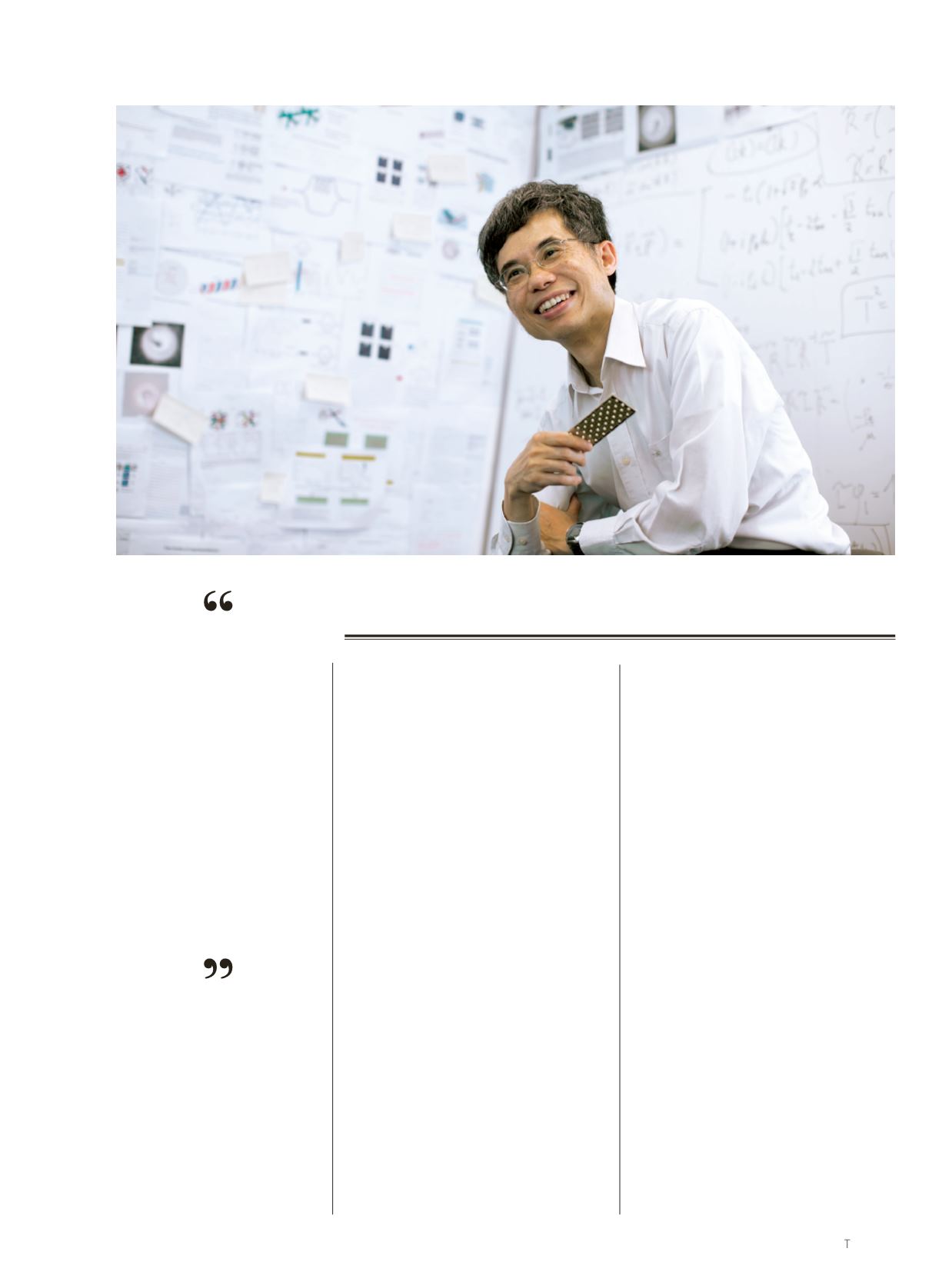
13
C U R I O S I T Y - D R I V E N
R E S E A R C H @ H K U S
Originally an electronic physicist work-
ing at Ames Laboratory in the US, Prof
Che Ting Chan moved into exploration of
materials with unusual light and sound
functionalities when he joined HKUST in
the mid-1990s. It was the perfect area for
a scientist who had spent his childhood
pondering such questions as why the sun
appeared white at noon yet red in the
evening and how the ocean can be green
or grey while water itself is colorless.
The Quest to Know
Starting from functionality, for example,
a material that can absorb light more
efficiently, Prof Chan and his team first
explore the theory behind what they seek
to achieve. At the material design stage,
the team uses mainly numerical compu-
tation to design samples. Then comes
fabrication. Prof Chan’s experimental
physics colleagues, including Prof WY
Tam, Prof KS Wong and Prof HB Chan,
make actual samples of the new materi-
als, utilizing the advanced equipment in
the University’s central Materials Char-
acterization & Preparation Facility and
Nanosystem Fabrication Facility, including
electron-beam lithography and focused
LIGHT
FANTASTIC
ion-beam lithography. Characterization,
which can probe, measure, and analyze
a material’s structure and properties,
may involve use of electron microscopes
as well as the construction of innovative
in-house equipment, not commercially
available. An integrated Metamaterials
Lab opened in 2016.
Setting the Pace
The groundbreaking research in new
materials has been supported by a large-
scale Collaborative Research Fund grant
from Hong Kong Research Grants Council
(RGC) since early 2000. Such exciting,
cutting-edge discovery has encouraged a
stream of outstanding research students
and post-doctoral researchers fromMain-
land China to take the plunge and move
into the new research area. In 2013, Prof
Chan received an Area of Excellence grant
of HK$46.5 million from the RGC to lead
exploration into novel wave functional
materials for manipulating light and
sound in collaboration with several other
universities in Hong Kong.
Some of the key discoveries that
HKUST research has produced are
featured in the following pages.
PROF CHE TING CHAN
Daniel CK Yu Professor of Science,
Executive Director, HKUST Jockey Club
Institute for Advanced Study
When something is
said to be impossible,
there are two points for
researchers to initially
clarify: whether it
really is forbidden by
the laws of Nature; or
whether it is simply
that no material that
currently exists in
Nature can do that


